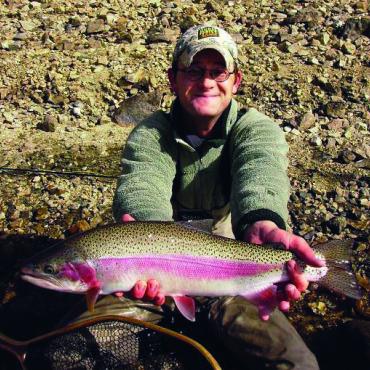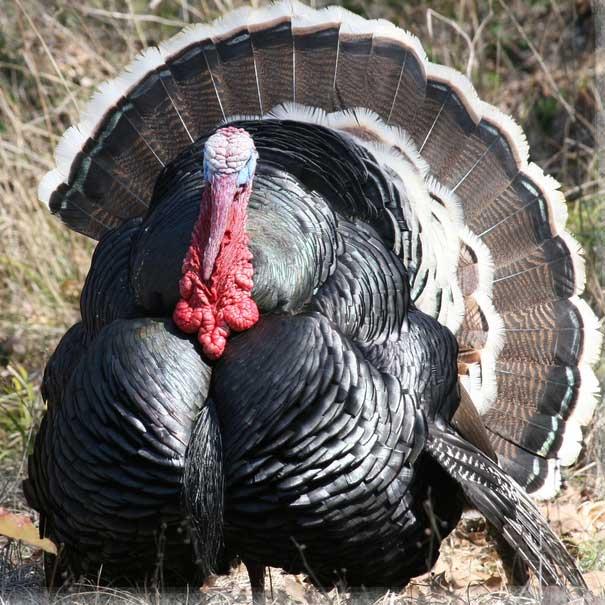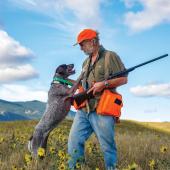Spring Turkey Huntin'
Chasing Montana's largest bird.
Early April marks the season-opener in Montana for North America’s largest upland game bird, the Wild Merriam turkey. Although Montana falls well outside the Merriam turkey’s traditional range, introduction efforts in the mid- to-late 1950s have led to the current healthy population. Merriam turkeys are a far cry from their brain-dead, genetically dysfunctional domestic cousins. Wild turkeys are fast, have keen senses of smell, color vision, and are extremely tough. The National Wild Turkey Federation recommends a .12 gauge shotgun on full choke using lead 2 or 4 shot. Aim for the head, because the thick feathers and hide of a turkey make them almost tanklike when it comes to shot penetration.
Montana’s spring season is limited to gobblers or breeding males; you can hunt them with either a shotgun or a bow. Full camouflage gear is recommended for hunting turkeys, so consider investing in or making a sniper-style ghillie suit, and use materials in natural brown, tan, and gray to match the birds’ habitat. This style of camo is great for turkey hunting because it breaks up the human silhouette completely and minimizes the chances of a bird noticing the shouldering of a shotgun or the drawing of a bow. When choosing your wild-turkey hunting clothes, make sure they are suitable for layering, as Montana weather can change fast and get nasty when it does.
A successful turkey hunter is also going to need a call. Literally hundreds of kinds of turkey calls exist. Make sure to pick a call that you are comfortable using and are able to use with minimal movement. If you’re a beginning caller, concentrate on learning the hen sounds—these are all you really need to bring in a good gobbler. A decoy can also be a helpful addition to any turkey safari but is not totally necessary.
Spring gobbler season requires hunters to purchase a turkey tag in addition to their regular bird and conservation licenses. Hunting regions in Montana are almost strictly limited to the eastern part of the state; however, in past years special permits have been available for some regions west of the divide. Consult 2006 FWP upland bird regulations for accurate information. Popular areas for gobblers are the Long Pines and Ashland areas of the Custer National Forest, portions of Fergus County, and the C.M. Russell National Wildlife Refuge. When scouting for Toms, look for feathers, scat, likely feeding plots, scratch and dust areas, and of course hens. It is best to scout your selected hunting area at least a day before your hunt. Climb to the highest accessible point in your selected area, using a spotting scope or binoculars to locate areas where the Toms are congregating. Mark this area on a map or with a GPS and plan on arriving there early the next morning. Find a stump, rock, or big sagebrush, and hide behind it. Listen for gobblers and answer with hen clucks, but always bear in mind that you may be answering other hunters. Exercise extreme caution when turkey hunting and always pay close attention to your surroundings. If you encounter other hunters stalking your calls, whistle or cough to alert them of your presence.
The science and art of turkey hunting can take years to master. If this is the year you plan to take up turkey hunting, consider hiring an outfitter. The experience of a good outfitter can prove a valuable learning tool. For more information on turkey hunting and regulations visit fwp.mt.gov and nwtf.org.
The Pine Creek Turkeys
People have told me that turkey hunting is a difficult sport, as the birds are often elusive and ornery, but I simply can’t believe that. If I were any faster of a driver, I’d have bagged a half-dozen of them already. As I drive to work on East River Road, almost a dozen turkeys will cross the road right in front of the Pine Creek Café, causing me to instinctively slam on the brakes and increase the time of my commute. If I were to decrease the number of feathered denizens in Pine Creek, I would be accused of pet slaughter. Nowhere else are the addle-brained birds more loved, except perhaps by Ben Franklin, who preferred the turkey to the eagle for our national bird. Ironically, we have both of the feathered kind around these parts, and due to the reckless driving down this way, they both could be considered endangered.
I sit at the wheel of my car, waiting for them to make their way across the road, and wonder if the chickens would be willing to give up their joke. “They cross the road twice daily,” says Ned Shapiro, owner of the Pine Creek Café. “Sometimes you’ll get guys out here trying to stop traffic to let them across… but mostly they’re okay by themselves.” This fowl rush hour has attracted more than star-struck tourists: “People—not people from around here, of course—ask me if they can shoot them,” Ned admits, but he is quick to relate that with cabins lining the road, a residential neighborhood behind, and outdoor seating of his restaurant along the turkey path, he tells them it’s not going to happen. This does not stop the (rumored) decline in the number in the gaggle around the last week in Thanksgiving, but it does keep certain people from mentioning where their succulent Thanksgiving feasts come from.
Personally, I can’t imagine how there can be much effort or sport in killing these imbecilic, awkward creatures. I know I have a skewed vision of the sport—the Pine Creek birds are treated like pets, fed by the locals and kept safe in their roosting trees just west of East River Road, so obviously the birds are loyal to their habitat and easy to spot. A gun isn’t really the best killing machine for this kind of turkey hunting, as you will probably be chased out of town by a shotgun yourself for disturbing the peace. The best weapon would actually be something more along the lines of a slightly used Subaru. As for my own activities, I will simply leave home a little earlier and engage in an early-morning wildlife viewing rather than try to gain a new hood ornament.
—Tanner Strickland











